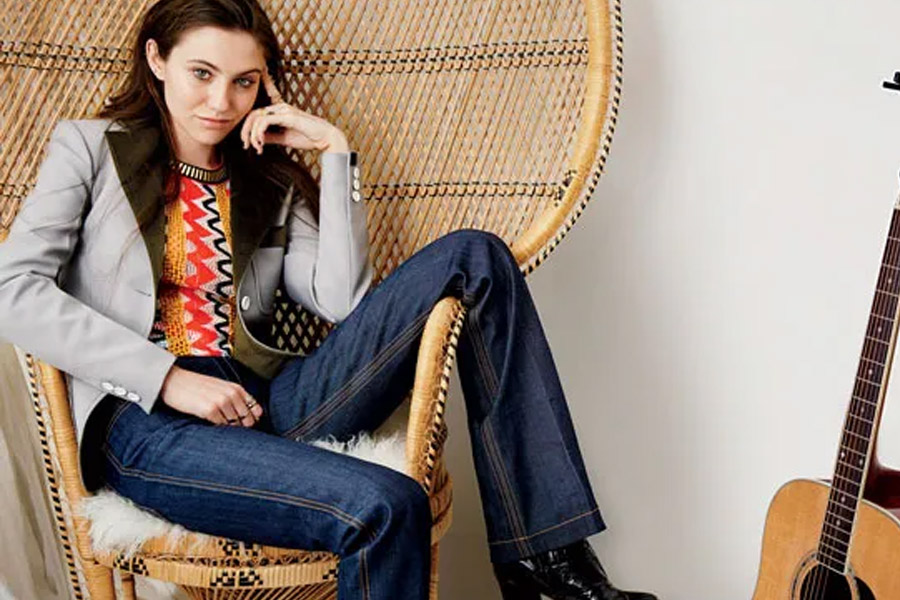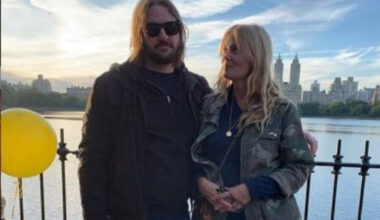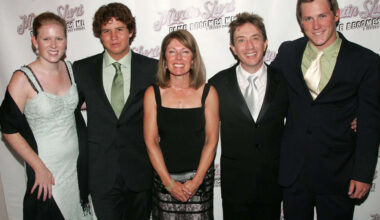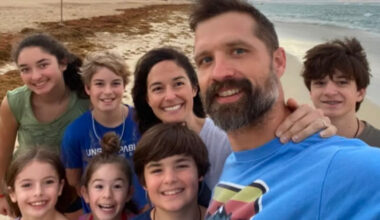Basic Information
| Field | Details |
|---|---|
| Full name | Romy Marion Byrne |
| Also known as | Romy Byrne |
| Date of birth | November 18, 1992 |
| Nationality | American |
| Parents | Ellen Barkin (mother), Gabriel Byrne (father) |
| Sibling(s) | Jack Daniel Byrne (older brother, b. 1989) |
| Education | Studied literature at Bard College |
| Noted roles | Flower (2017), Love After Love (2017), Strangers (2017) |
| Professions | Model, actor, DJ/music collaborator |
| Years active | 2010s–present |
Early life and education
Romy Marion Byrne grew up with a foot on each side of the Atlantic—in spirit, if not in constant miles—carrying the sensibilities of two acclaimed actors and an extended family rooted in Irish and New York traditions. Rather than racing directly toward the bright marquee lights, she took a more thoughtful approach. She studied literature at Bard College, a choice that hints at her instincts: close reading, character study, and the search for the human voice beneath the noise. Those habits of attention show up again and again in the work she has chosen and the way she speaks about it publicly.
By the time she was in her early twenties (2014–2015), profiles described a young artist trying many doors: modeling contracts, acting classes, and hours spent around music and DJ booths. It was a sketchbook phase—trial by curiosity—before the film credits arrived a few years later.
Modeling and the mirror
Romy’s modeling career came into focus in the mid-2010s through signings with major agencies (including Ford and Next) and editorials that framed her as something more than a famous surname. The camera likes symmetry, but her appeal often reads as asymmetry in balance—classic features offset by a perceptible shyness, the kind that draws the viewer in. Between approximately 2014 and 2015, interviews and fashion features placed her in the orbit of stylists, photographers, and magazines that shaped that era’s downtown aesthetic.
For Romy, modeling was less a destination than a platform—an introduction to collaborators, an apprenticeship in visual language, a rehearsal space for character and mood. In that sense it functioned like a mirror that reflects not only a face but a sensibility: restrained, sharp, and observant.
Stepping onto screens
In 2017, Romy appeared in a cluster of independent projects, among them Flower and Love After Love, with listings in public film databases also recording a credit in Strangers. These roles were not star vehicles; they were small rooms in larger houses, spaces to listen, react, and collect on-set experience. The year itself is a clean ledger line—2017 marking the moment when scattered preparation coalesced into screen work.
Indie films are collaborative cities: compact, fast-moving, often improvisational. They reward actors who arrive with literary instincts and an ear for subtext. Romy’s early credits suggest that she understood this ecosystem and gravitated toward it, building from credible, grounded appearances rather than spectacle.
Music, DJ booths, and a multihyphenate curiosity
Between modeling seasons and film sets, Romy has been described in interviews as DJing and assisting within studio environments. These are not the kinds of pursuits that always translate into splashy headlines, but they teach rhythm—of scenes, of edits, of a night’s arc—and rhythm, in turn, shapes performance. The DJ booth is a laboratory of feeling: you read the room, find the right tempo, then lift or lower the energy by degrees. The same intelligence threads through screen work and fashion sets.
If modeling refined her eye and film sharpened her ear for dialogue, music gave her a sense of timing. Together they form a quiet triad: image, voice, and pace.
Family and heritage
Romy’s family tree is both public and storied. Her mother, Ellen Barkin, is an award-winning American actor and producer known for a ferocious screen presence and a long roster of acclaimed roles. Her father, Gabriel Byrne, is an Irish actor, writer, and producer whose career spans stage, film, television, and memoir. The parents’ marriage began in 1988 and ended in divorce in 1999, but their public posture in later years has often been described as amicable and mutually respectful.
On the Barkin side, Romy’s maternal grandparents are Evelyn (née Rozin) and Sol Barkin—New York through and through, linked in biographies to hospital administration and sales work. On the Byrne side, her paternal grandparents are Dan Byrne and Eileen (née Gannon), names that conjure Dublin terraces, local schools, and the classic Irish mix of grit and lyricism. Gabriel Byrne is frequently listed with several siblings—Donal, Thomas, Breda, Margaret, and Marian (who died in childhood)—a reminder that large Irish families carry both laughter and loss in their bones.
Here is a quick family snapshot:
| Name | Relation | Notables |
|---|---|---|
| Ellen Barkin | Mother | American actor and producer |
| Gabriel Byrne | Father | Irish actor, writer, producer |
| Jack Daniel Byrne | Brother | Musician; born 1989 |
| Evelyn Rozin Barkin | Maternal grandmother | Worked in hospital administration |
| Sol Barkin | Maternal grandfather | Worked in chemical sales |
| Dan Byrne | Paternal grandfather | Soldier and cooper, per public biographies |
| Eileen Gannon Byrne | Paternal grandmother | Irish family matriarch |
| Donal, Thomas, Breda, Margaret, Marian (dec.) | Paternal aunts/uncles | Siblings of Gabriel Byrne |
Timeline highlights
| Year | Milestone |
|---|---|
| 1988 | Ellen Barkin and Gabriel Byrne marry. |
| 1989 | Birth of Romy’s brother, Jack Daniel Byrne. |
| 1992 | November 18: Romy Marion Byrne is born. |
| Early 2010s | Modeling signings and early editorial work begin. |
| 2014 | Interview features profile her as a Bard literature student pursuing modeling and music. |
| 2015 | Teen-oriented fashion features spotlight her modeling and acting training. |
| 2017 | Screen credits include Flower, Love After Love, and Strangers. |
| 2018–2025 | Lower public profile; periodic mentions alongside parents in press items. |
This chronology is spare by design—less a résumé than a map of markers showing steady, deliberate steps rather than headline-chasing leaps.
Public presence, privacy, and what isn’t on the record
Romy’s public footprint is intentionally modest. There are no widely cited major awards under her name, and reliable, verifiable net-worth figures do not appear in reputable public sources. She surfaces in family portraits at premieres, in selective editorial features, and in film listings that confirm the work without amplifying the noise. In an era that often treats visibility as a currency, she has chosen a narrower channel, one that values interiority and experimentation over exposure.
The absence of constant coverage is not a gap; it’s a choice. It keeps the emphasis on the work itself, however intermittent, and on the evolution that happens off-camera and between credits.
FAQ
Who are Romy Marion Byrne’s parents?
Ellen Barkin and Gabriel Byrne.
When was she born?
November 18, 1992.
Where did she study?
She studied literature at Bard College.
What is she known for professionally?
Modeling, acting in independent films, and occasional DJ/music work.
Which films has she appeared in?
Credits include Flower (2017), Love After Love (2017), and Strangers (2017).
Does she have major awards?
There are no widely cited major industry awards attributed to her.
Is she active on social media?
She keeps a relatively low public profile; any social accounts appear to be limited and not highly publicized.
What is her net worth?
No reliable public figure is available; reputable sources do not list a verified net worth.
Does she come from an artistic family?
Yes—both parents are distinguished actors, and extended family references are part of well-documented public biographies.



